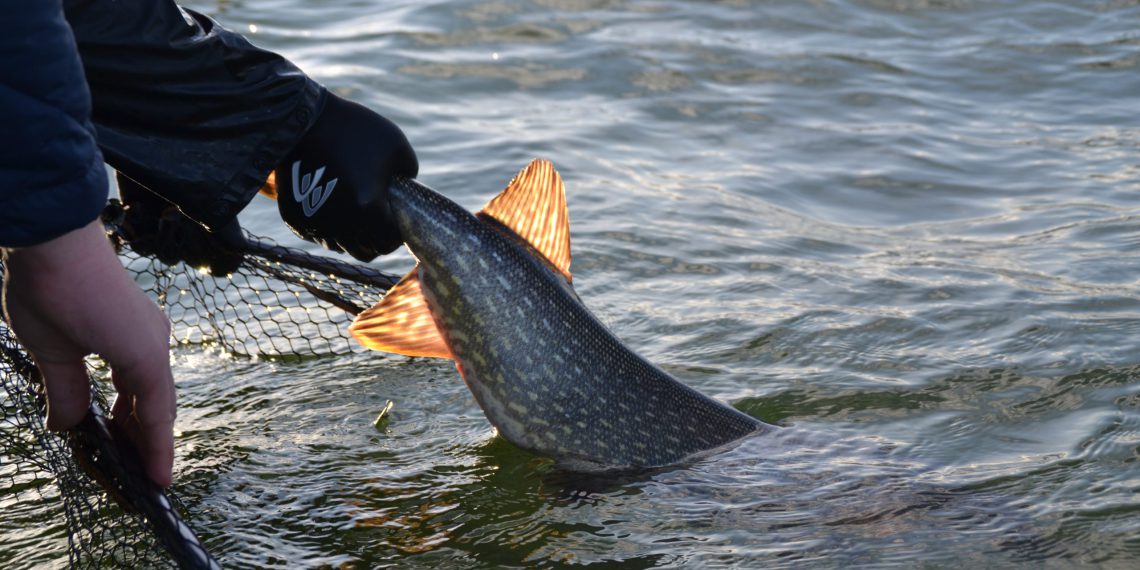In order to reduce overfishing, the status and productivity of many fish stocks are assessed by means of stock analyses. The fecundity of female fish is an important parameter for this. However, most calculations contain a systematic error: the number of eggs of smaller spawning fish is overestimated, while that of larger fish is underestimated — and it is precisely the “super spawners” that are targeted by fisheries. A recent study with the participation of the Leibniz Institute of Freshwater Ecology and Inland Fisheries (IGB) and the Humboldt University of Berlin shows that the recovery potential of many fish stocks is thus overestimated and the risk of overfishing can increase.
Incorrect basic biological assumptions
Almost all calculations used to estimate the status of exploited fish stocks are based on the assumption that the egg count of a female fish increases in direct proportion to her weight (isometry). However, recent studies show that in most fish species, large, heavier females lay more eggs per body mass than younger, lighter females. Thus, egg numbers increase disproportionately with weight rather than uniformly (hyperallometry). If old, large females are among the spawning fish of a stock, more eggs will be produced than if the same total biomass consists predominantly of young, small fish.
Researchers from Australia, the U.S. and Germany used model calculations for 32 marine fish species to investigate what happens when two of the most important reference points for fisheries management are adjusted according to the new findings on the relationship between egg number and fish weight: the spawning potential of a fished stock relative to the spawning potential of an unfished stock, and the maximum sustainable yield of a fish stock. Maximum sustainable yield quantifies the amount of fish that can be taken from a stock over the long term. If more fish are caught, the stock is said to be overfished. Both spawning potential and sustainable yield are used worldwide to set fishing quotas and implement conservation programs.
Spawning potential is often overestimated in calculations for catch quotas
The results of the study show: On average, the spawning or reproductive potential of the 32 fish species analyzed is overestimated by 22 percent. However, the values vary from species to species between 3 and 78 percent. This is because the hyperallometry of fecundity varies among species. For example, the overestimation of spawning potential is particularly high for Pacific sardine at 78 percent, compared to cod at 18 percent and herring at 11 percent.
Systematic overfishing of large fish:
If the wrong biological relationships to egg numbers per fish weight are assumed when calculating the reproductive potential of an exploited fish stock, the allowable catch rates are on average 2.7 times too high. Of course, not every fish larva survives in nature. This regulatory capacity of fish stocks is taken into account in the analysis of maximum sustainable yield. But even when calculating maximum sustainable yield, assuming the wrong biological relationships leads to the derivation of maximum catch rates that are 1.2 times higher than would be appropriate for sustainability.
“This means that targeting large spawning fish — as is common in fisheries — reduces the reproductive potential of a stock and its yielding capacity. This can systematically fuel overfishing or slow or even prevent stock recovery,” explains fisheries professor Robert Arlinghaus of IGB and HU Berlin, co-author of the study.
Previous textbook opinion on fisheries management: catch the big ones!
Almost all fish stocks in the oceans, lakes and rivers are managed so that the larger fish are selectively caught and the smaller ones survive to spawn at least once in their lifetime. That’s the thinking behind the widespread minimum size requirement. This catch regulation is intended to prevent fish stocks from collapsing despite intensive exploitation. This approach is based on the assumption that the older and larger animals do little to renew the stock, and even cost yield potential because they no longer grow as fast as smaller and younger fish.
“This previously blanket management practice and the basic biological assumptions behind it regarding the supposedly limited productivity of large fish are outdated in light of our results. On the contrary, biological productivity, which includes egg production, increases rather than decreases with fish size; accordingly, selective harvest of the very large fish can also weaken stocks.”
- Robert Arlinghaus
More sustainable fisheries by protecting the big ones
Measures that help protect large fish can boost fishing yields and help protect fish stocks, according to the researchers — for example, more selective fishing methods that spare large fish as well as young ones. In recreational fishing, catch windows could replace traditional minimum sizes. But protection zones or closed seasons can also be useful. In detail, the best measures depend on the fish species and fishing methods and cannot be generalized.
The authors recommend that future stock assessments be recalibrated to account for the greater reproductive capacity of larger fish. “Both conservation and fisheries and angling can benefit from more accurate stock analysis,” Robert Arlinghaus concludes.

















